Fig (1) "Ring of Fire", the annularly eclipsed Sun
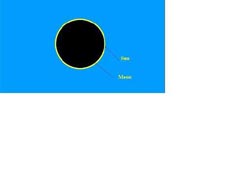
Fig (2) The geometry of an annular solar eclipse
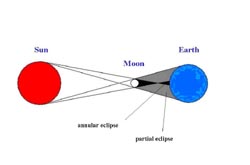
The orbit of the Moon around the Earth is not exactly circular; it is rather noticeably elliptical in shape. Thus, the distance of the Moon from the Earth varies along the lunar orbit. The minimum and maximum distances of the Moon from the Earth are termed respectively perigee and apogee; these terms are of Greek origin.
The average distance of the Moon from the Earth is about 384,400km, and the Earth-Moon distance fluctuates by about 13% from 363,300km (perigee) to about 406,000km (apogee). Accordingly, the apparent size of the Moon in the sky changes by the same amount.
Fig (3)
Perigee and Apogee
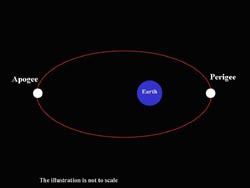
The orbit of the Moon around the Earth is elliptical in shape, with the Earth being at one of the foci of the orbit.
Created with Starry Night software.
If an eclipse occurs when the Moon is near apogee, the Moon would be too small to cover up the Sun completely. This is the case for an annular solar eclipse, a very interesting type of solar eclipses, in which the Moon blocks most of the Sun disk leaving only an annulus or a ring of dazzling sunlight.
Fig (4)
The antumbra or negative shadow
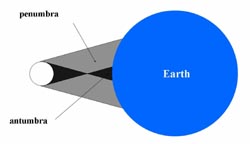
DO NOT OBSERVE THE SUN DIRECTLY WITH YOUR EYES OR THROUGH THE TELESCOPE OR BINOCULARS DURING ALL OF THE STAGES OF AN ANNULAR SOLAR ECLIPSE.
The average length of the lunar shadow is about 374,000km (the length of Earth's shadow is about 1,400,000km, for comparison). The length of the lunar shadow changes by only about 2% (6,400 km) along the lunar orbit. In an annular solar eclipse, when the Moon is in the distant parts of its orbit (about 400,000km away), the lunar umbra is not long enough to reach the Earth. It is the antumbra that strikes the surface of the planet.
Fig (5) The antumbra or negative shadow
The path through which the antumbra crosses our planet is called the path of annularity. The phase of annularity, or "ring of fire", can be observed only along this path. (Annular solar eclipses are popularly called "ring of fire".)
Map (1) The path of annularity of the annular solar eclipse of 31 May 2003.
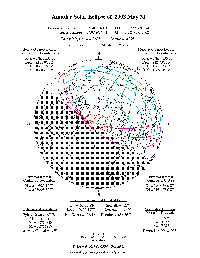
The phase of annularity is relatively longer than the totality phase of the total solar eclipse; it may last over 10 minutes, but usually its duration is about half that value.
The sky may darken a bit during an annular solar eclipse but this does not mean the eclipse could be viewed with the unprotected eye!
The annular solar eclipse can be observed only by projecting the image of the eclipsed Sun through a telescope, binocular or a pinhole camera on to a white cardboard or sheet of paper. A safe, especially designed solar filter or approved eclipse glasses may also be used. Please review the section of "Safe Eclipse Viewing".
Five Arab countries, Algeria, Tunisia, Libya, Sudan and Somalia, will witness the annularity phase of the annular solar eclipse of 3 October 2005. Sudan will enjoy the longest annularity phase of 4 minutes 31 seconds. This eclipse will be partial in Egypt and all the other Arab countries.
Map (2) The path of the annular solar eclipse of 3 October 2005
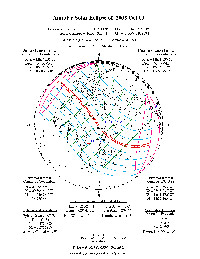
The annularly eclipsed Sun may resemble a blazing eye. The ancient Egyptians believed that their Sun god Ra has an eye, "The Eye of Ra". Recent research has demonstrated that the belief in the "Eye of Ra" may have been inspired by ancient annular solar eclipses.
Further Reading
IAU Eclipse Information Page
http://www.eclipses.info
The Homepage of the Working Group on Solar Eclipse
http://www.williams.edu/astronomy/IAU_eclipses/
Measuring the Moon's Distance
http://sunearth.gsfc.nasa.gov/eclipse/SEhelp/ApolloLaser.html
Aymen Mohamed Ibrahem
PSC, senior astronomy specialist |

